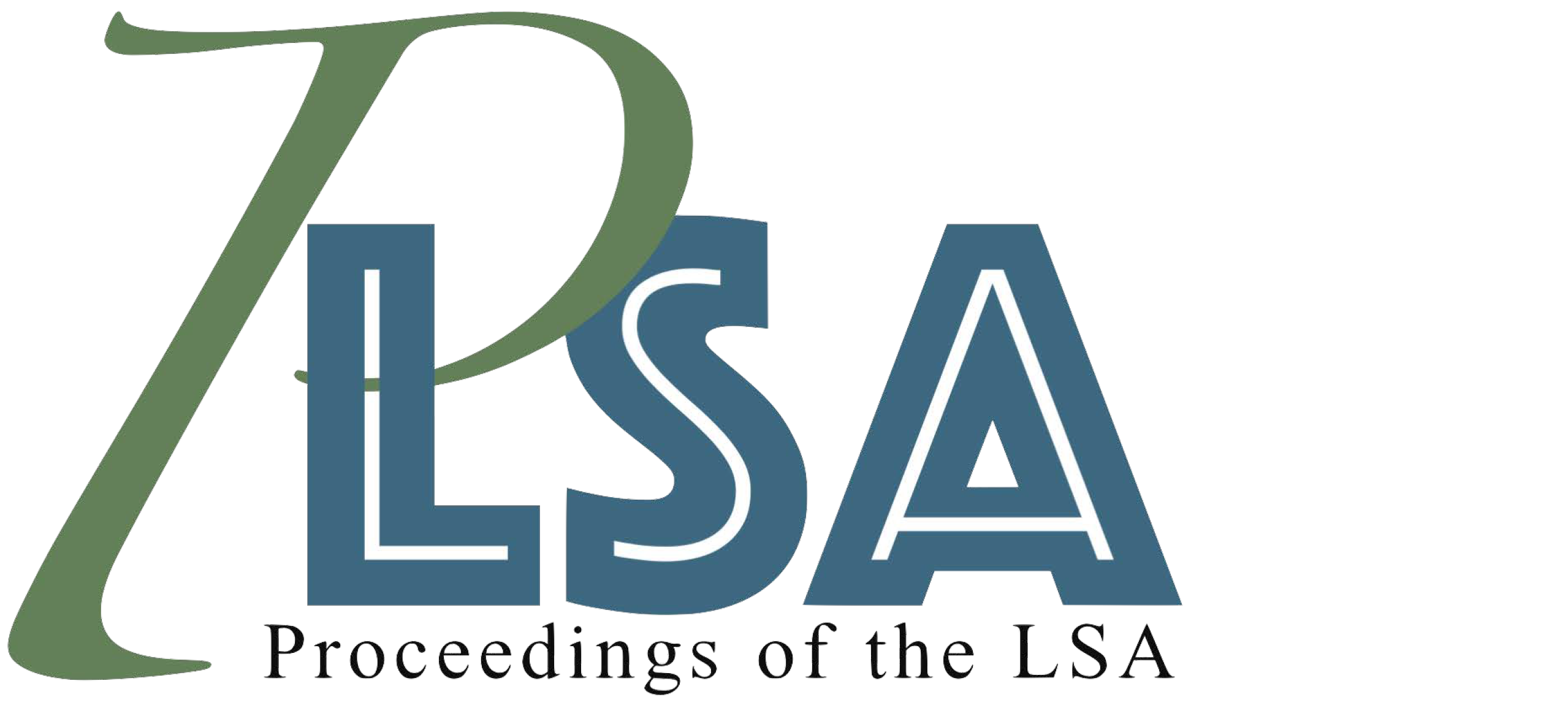The role of verb semantics in Hungarian verb-object order
DOI:
https://doi.org/10.3765/plsa.v6i1.4941Keywords:
Hungarian, lexical semantics, computational linguistics, corpus analysisAbstract
Hungarian is often referred to as a discourse-configurational language, since the structural position of constituents is determined by their logical function (topic or comment) rather than their grammatical function (e.g., subject or object). We build on work by Komlósy (1989) and argue that in addition to discourse context, the lexical semantics of the verb also plays a significant role in determining Hungarian word order. In order to investigate the role of lexical semantics in determining Hungarian word order, we conduct a large-scale, data-driven analysis on the ordering of 380 transitive verbs and their objects, as observed in hundreds of thousands of examples extracted from the Hungarian Gigaword Corpus. We test the effect of lexical semantics on the ordering of verbs and their objects by grouping verbs into 11 semantic classes. In addition to the semantic class of the verb, we also include two control features related to information structure, object definiteness and object NP weight, chosen to allow a comparison of their effect size to that of verb semantics. Our results suggest that all three features have a significant effect on verb-object ordering in Hungarian and among these features, the semantic class of the verb has the largest effect. Specifically, we find that stative verbs, such as fed 'cover', jelent 'mean' and övez 'surround', tend to be OV-preferring (with the exception of psych verbs which are strongly VO-preferring) and non-stative verbs, such as bírál 'judge', csökkent 'reduce' and csókol 'kiss', verbs tend to be VO-preferring. These findings support our hypothesis that lexical semantic factors influence word order in Hungarian.Downloads
Published
2021-03-20
Issue
Section
Articles
License
Published by the LSA with permission of the author(s) under a CC BY 4.0 license.
How to Cite
Demszky, Dorottya. 2021. “The Role of Verb Semantics in Hungarian Verb-Object Order”. Proceedings of the Linguistic Society of America 6 (1): 54–68. https://doi.org/10.3765/plsa.v6i1.4941.
